Doheny Memorial Library
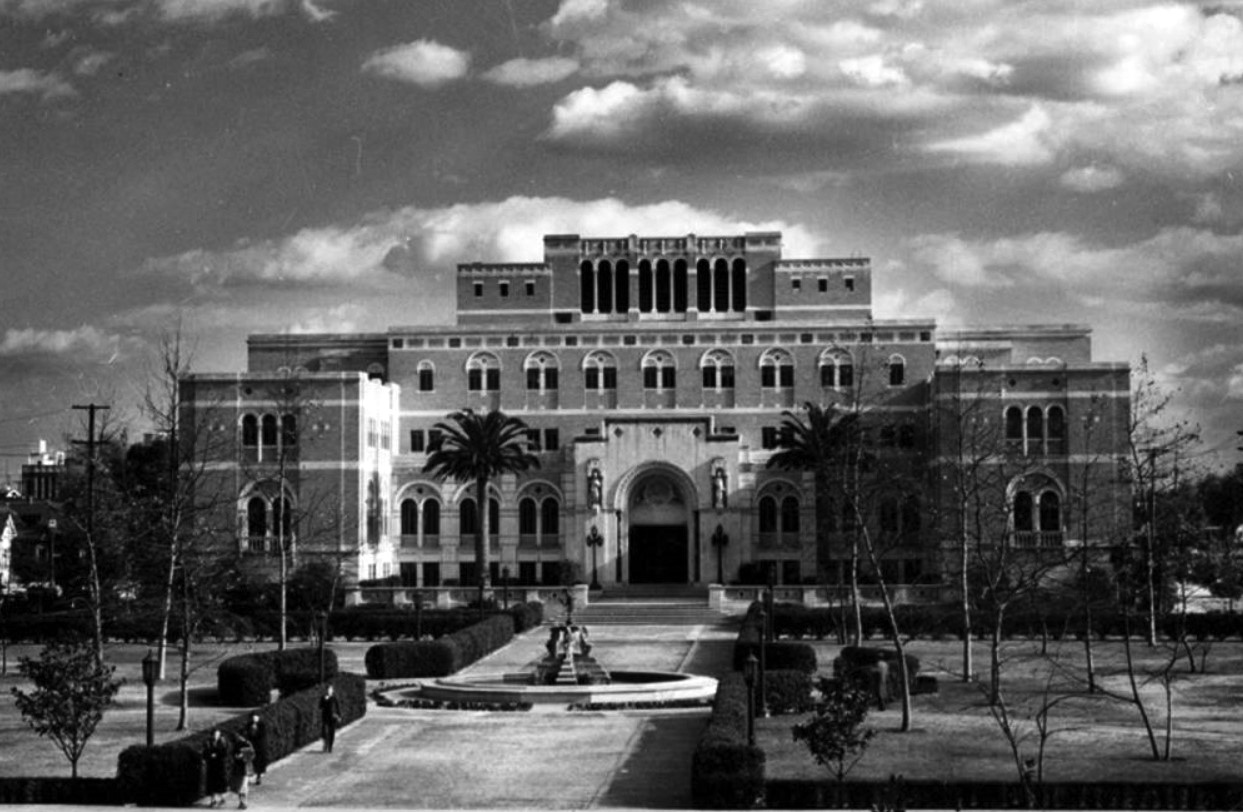 |
|
| (1932)* - Exterior view of Edward Doheny Jr. Memorial Library on the U.S.C. campus. A large fountain graces the middle of the walkway leading to the front of the building. Note the architectural designs. Building was built in 1931 and designed by architects Cram and Ferguson with Samuel Lunden. |
Historical Notes In 1892, Edward Laurence Doheny Sr. struck oil in Los Angeles, setting off a major land boom. The Dohenys built a financial empire based upon their success in the oil-producing business. Their son, Edward L. 'Ned' Doheny Jr., studied at USC and remained involved in the university after his graduation in 1916. Tragically, he was murdered at his home in Beverly Hills in February 1929. As a memorial to their son, the Dohenys contributed the entire $1.1 million needed to build the Edward L. Doheny Jr. Memorial Library and actively participated in the design and construction of the facility. |
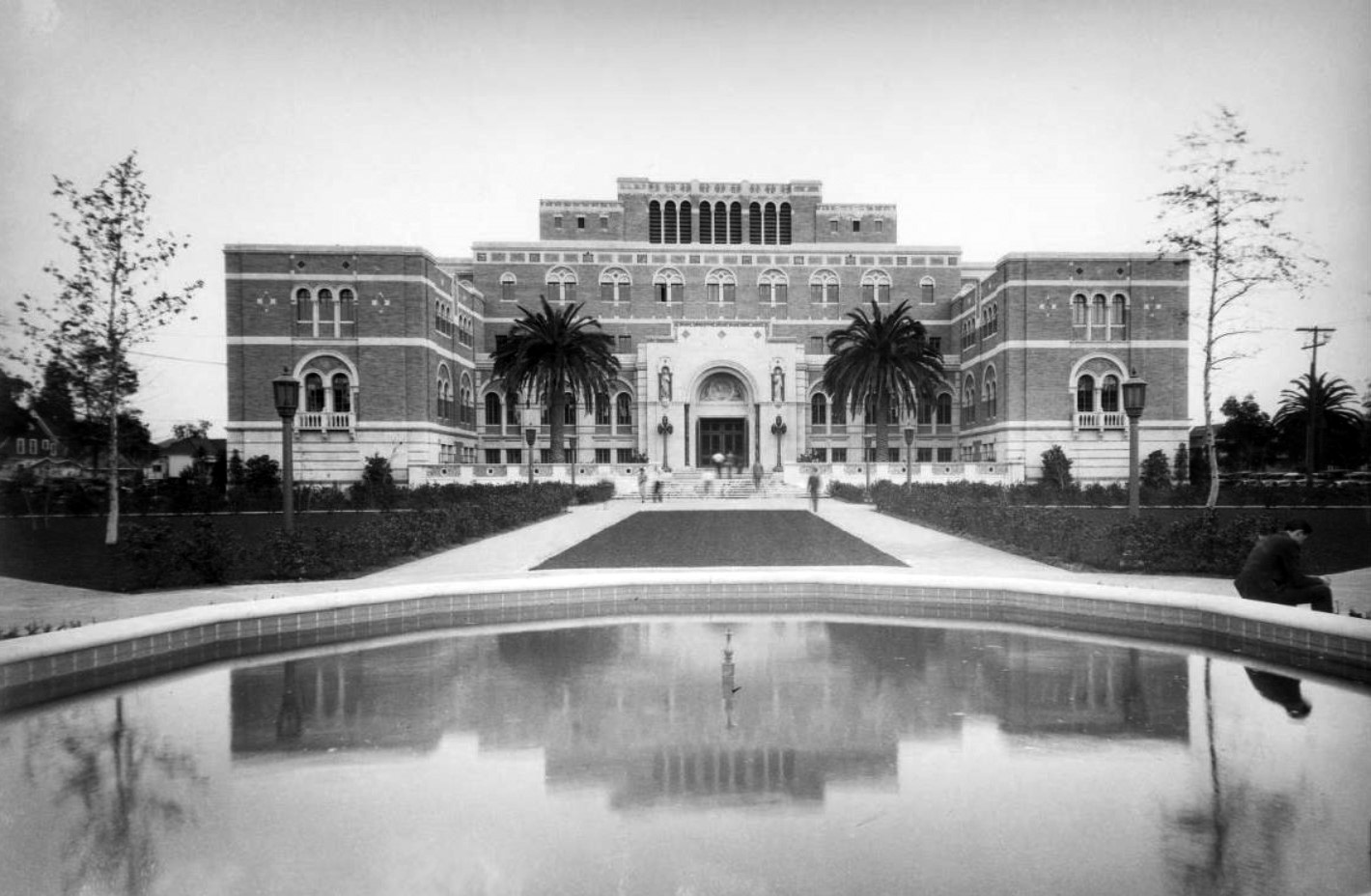 |
|
| (1932)^ – View showing the Edward L. Doheny Memorial Library, September 1932. At the time of its construction, Doheny Memorial Library had no architectural precedent at USC. It was designed to be a striking visual statement that would complement the existing buildings on campus. |
Historical Notes Construction of the Doheny Memorial Library, from groundbreaking to dedication, took only 12 months. It was recognized instantly as a landmark building in Southern California, earning numerous design awards for its beautiful Italian Romanesque architecture. |
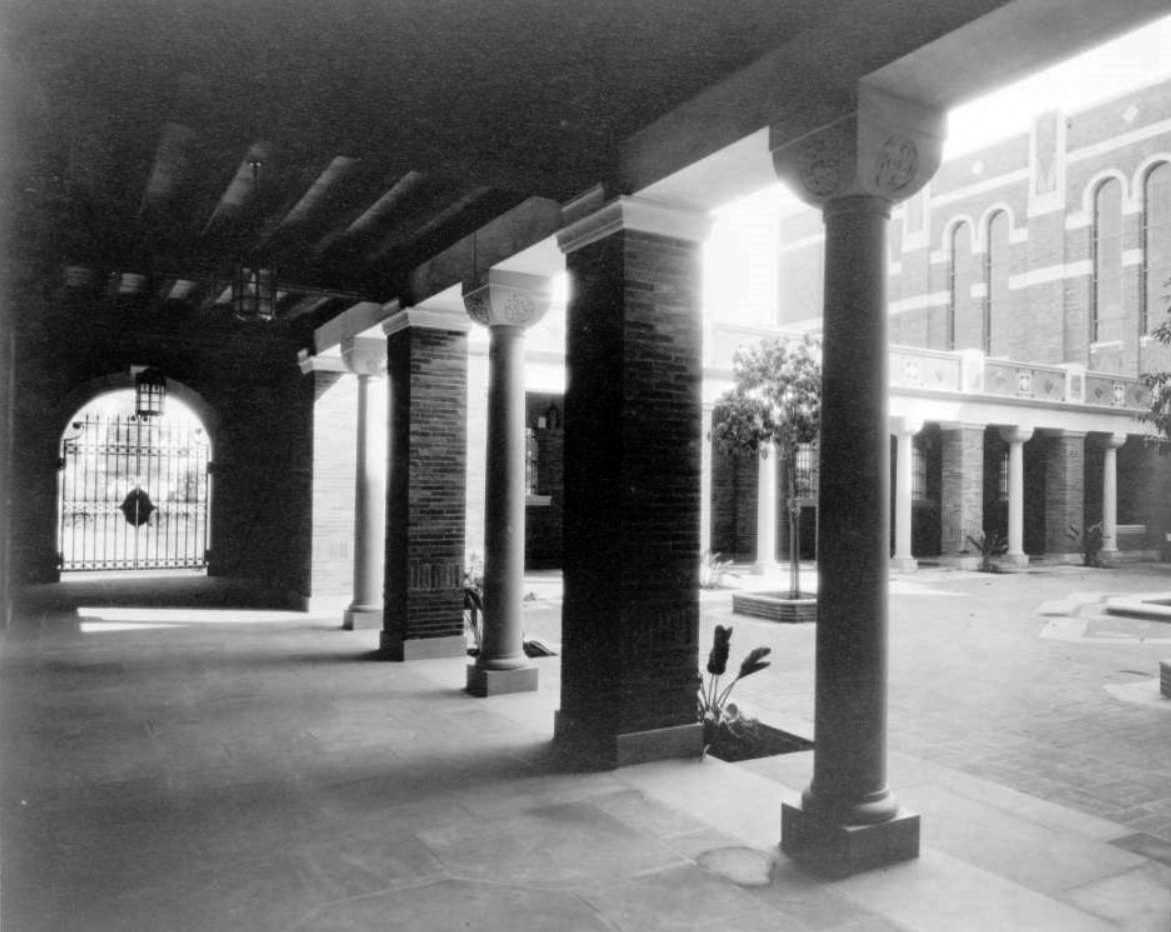 |
|
| (ca. 1932)^ – View facing east showing the courtyard of the Edward L. Doheny Jr. Memorial Library. |
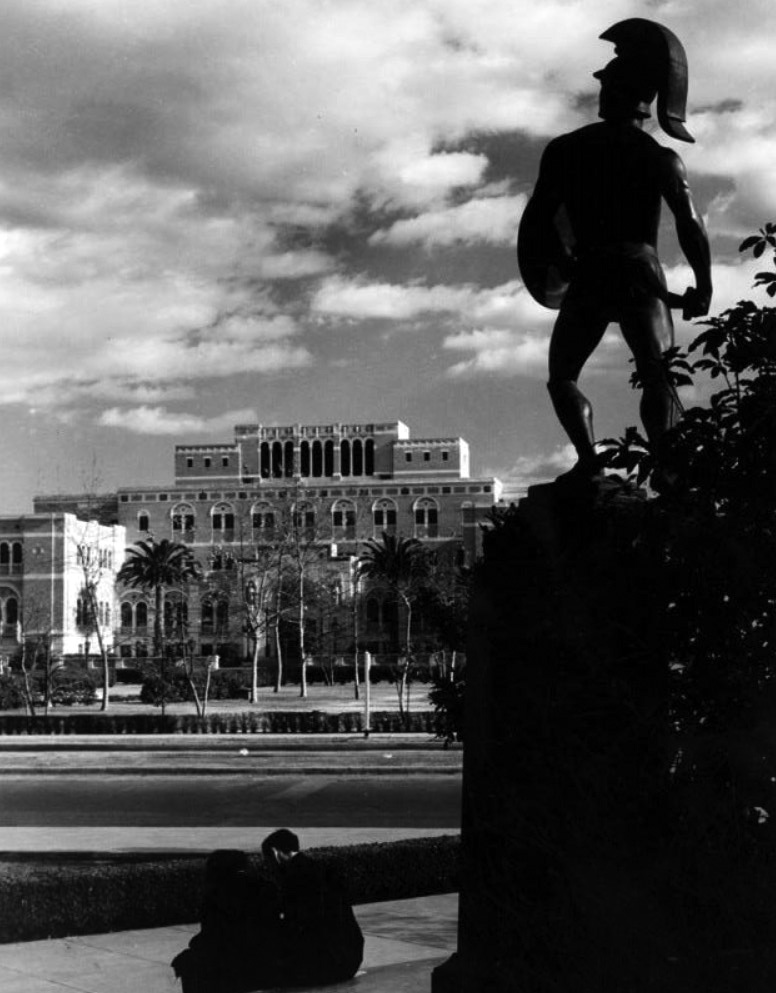 |
|
| (ca. 1932)* - View is looking past the Tommy Trojan statue towards the Edward Doheny Jr. Memorial Library, as seen from Bovard Auditorium. |
Historical Notes In setting the four-story structure 270 feet from University Avenue, facing the Bovard Administration Building, the architects created a quadrangle in the center of campus. The sycamore trees planted seventy years ago now tower majestically over the area and provide a shaded canopy during the annual commencement ceremony in May.* |
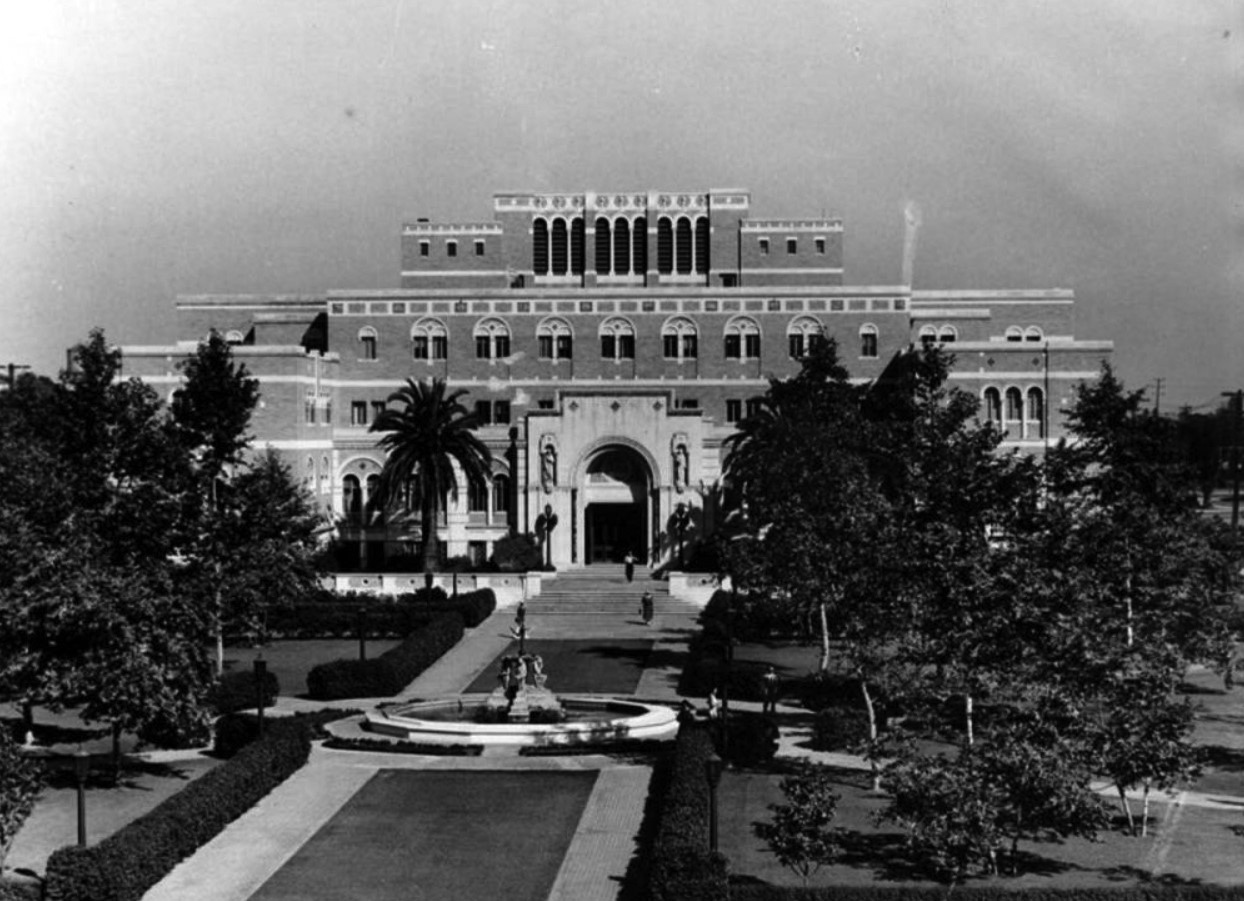 |
|
| (ca. 1938)^ - A large fountain graces the middle of the walkway leading to the front of the Doheny Library. |
Historical Notes Architects Samuel Eugene Lunden (Hancock Foundation Building, 1940) and Ralph Adams Cram (consulting architect at Princeton University, 1907–1929) designed the iconic Edward L. Doheny, Jr. Memorial Library (1932), working with benefactor Estelle Doheny and USC’s longtime head librarian, Charlotte Brown. |
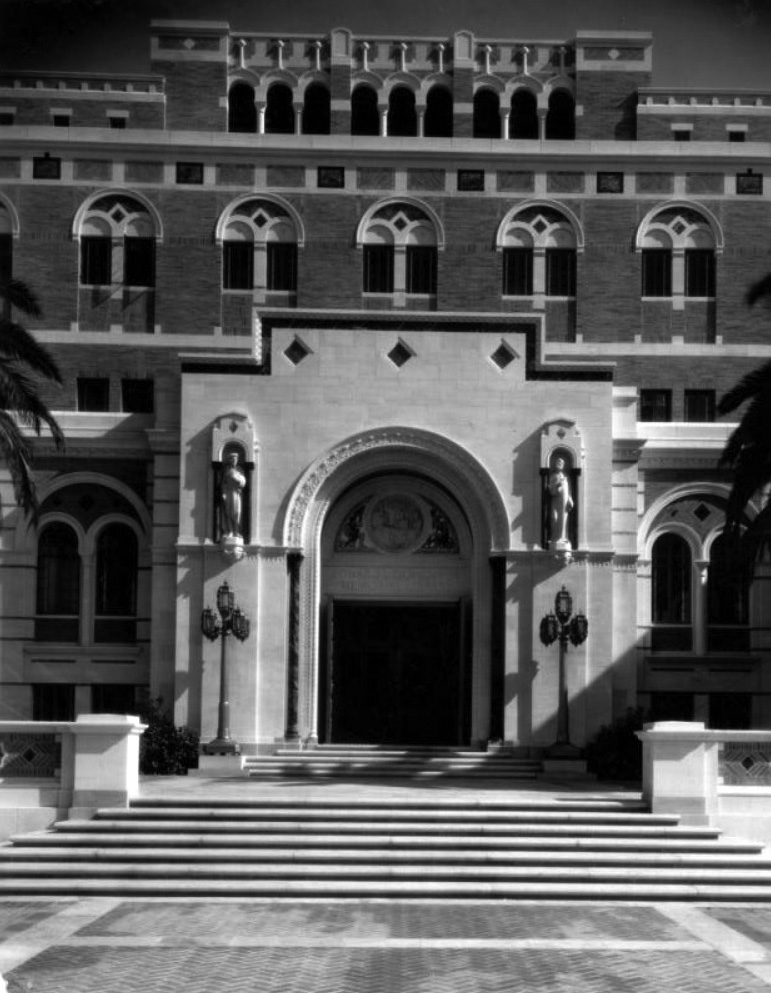 |
|
| (1932)* – Close-up view of the entranceway of the Edward Doheny Jr. Memorial Library on the U.S.C. campus. Two statues stand on either side of the large archway which graces the entrance to the library. Note the architectural designs on the building. |
Historical Notes The theme of higher education is commemorated in many forms throughout the library. Statues of William Shakespeare and Dante Alighieri flank the main entrance to the building. Above the doors is a marble sculpture that portrays three seated figures-a teacher instructing two students. On either side of the medallion is depicted a mythological scene related to ingenious thinking: Hercules obtains the golden apples guarded by the Hesperides (outsmarting the gods in doing so), and Alexander the Great uses his sword to cut the famously intricate Gordian knot (instead of attempting to untie it). The massive, hand-chased bronze exterior doors weigh some two tons yet are balanced so well they can be moved with the touch of a finger.* |
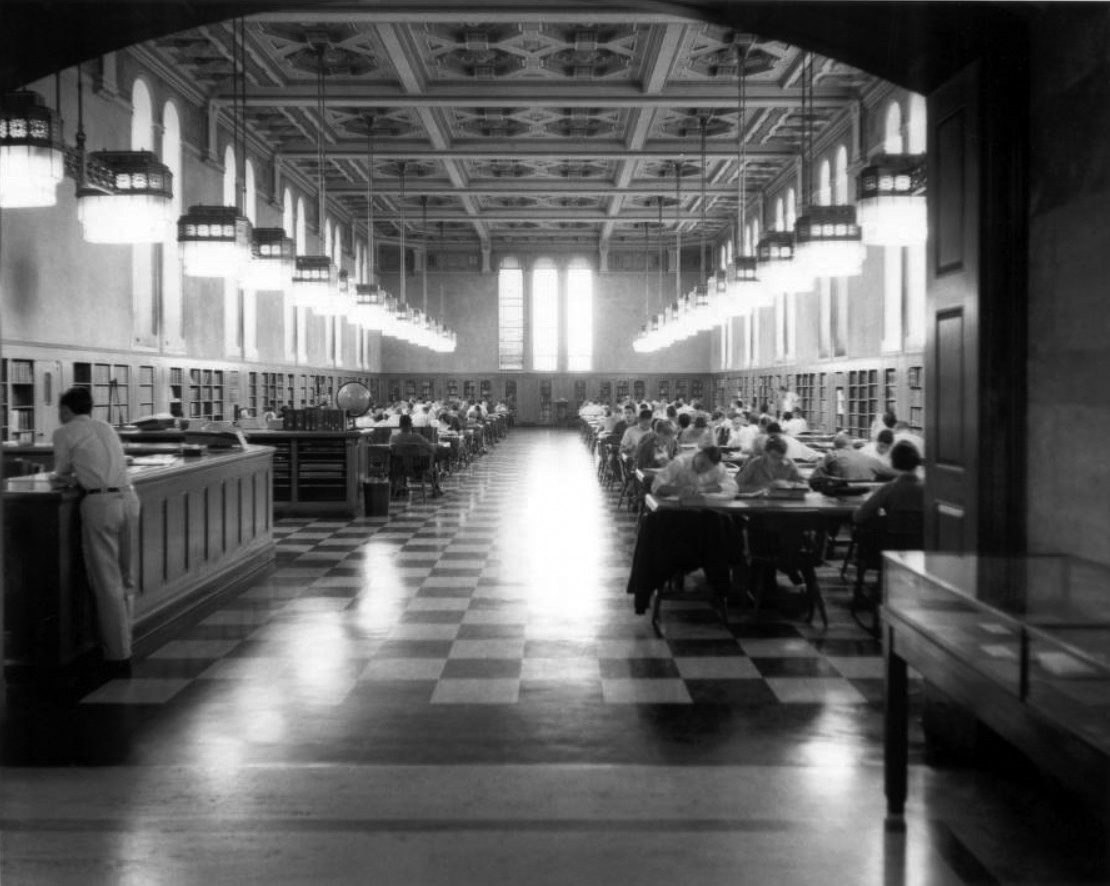 |
|
| (ca. 1958)^ - First-floor main reading room, later (1990) renamed the Los Angeles Times Reference Room, at the Doheny Memorial Library. |
Historical Notes A highlight of Doheny Memorial Library is the Times Reference Room in the southeast wing of the first floor. The room was designed to accommodate 400 students and some 6,000 books. It remains the busiest study and reference reading room in the building. The library contains over 300,000 volumes and is said to be one of the most complete of its kind in the United States. Private cubicles for graduate students, seminar rooms, and reading rooms to seat 1400 students are featured. |
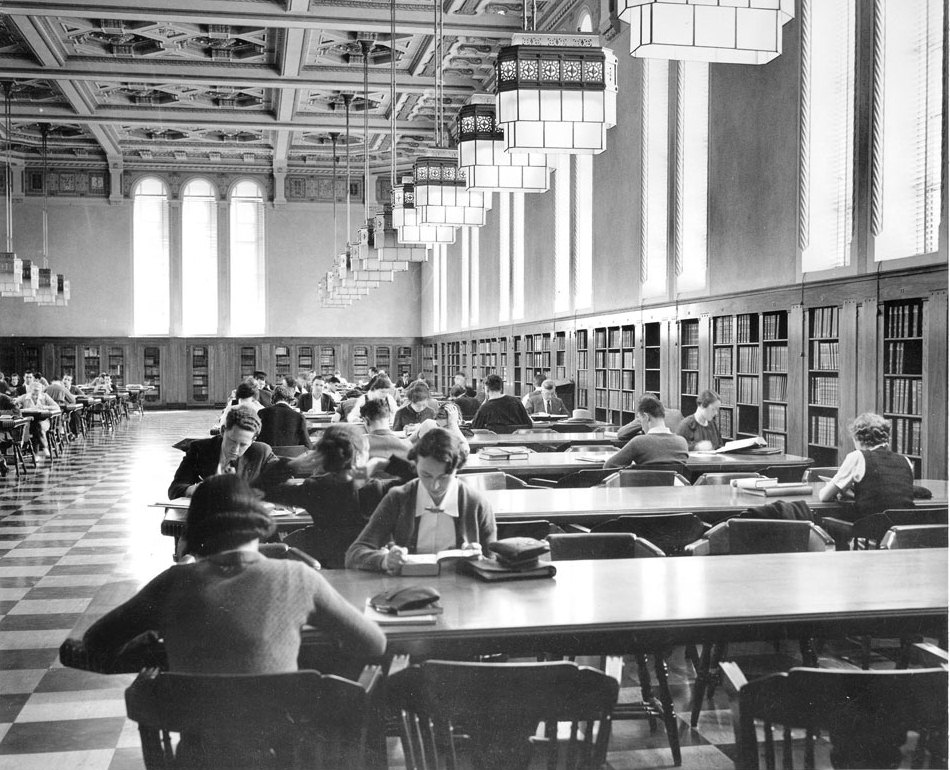 |
|
| (ca.1950s)^ - Closer view of students studying in the Times Mirror Reading Room of the Doheny Library. |
Historical Notes Marble, granite and travertine are featured in much of the interior surfaces and decorative details. Estelle Doheny took a keen interest in the artistic program, requesting that all the furnishings be made in America and that California companies especially be involved. The library contains many woods native to California including redwood, black walnut, white oak, sycamore, satinwood and knotty pine.* |
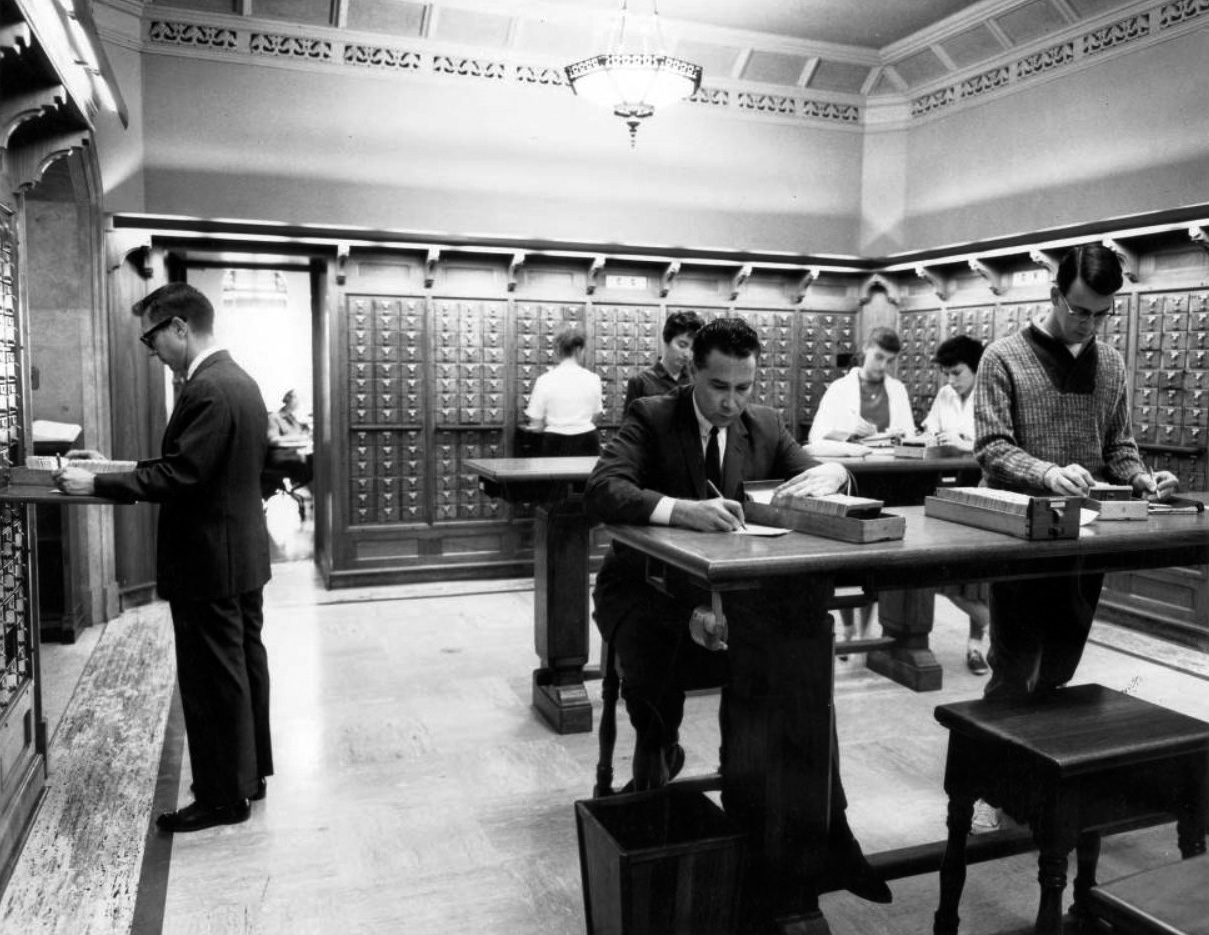 |
|
| (1950s)^ - Students using the card catalog in the Catalog Room of Doheny Memorial Library, on the campus of the University of Southern California. |
Historical Notes When it opened, Doheny was one of the most advanced libraries in the nation. To obtain a book, one looked it up in the card catalog, brought a call slip to the loan desk and waited while pneumatic tubes whisked the call slip to the appropriate stack level, where a waiting staff member would retrieve the volume and put it on an automatic conveyor. When the book arrived at the loan desk, a number on a board would light up to let the student know it was ready for checking out. Until 1966 the stack levels were closed to all but graduate students and faculty. Today, the card catalog has been replaced by an online one and any student, faculty, or staff member can search for a book's call number using USC's online catalog, find the book in the stacks themselves and then check it out with their ID card.* |
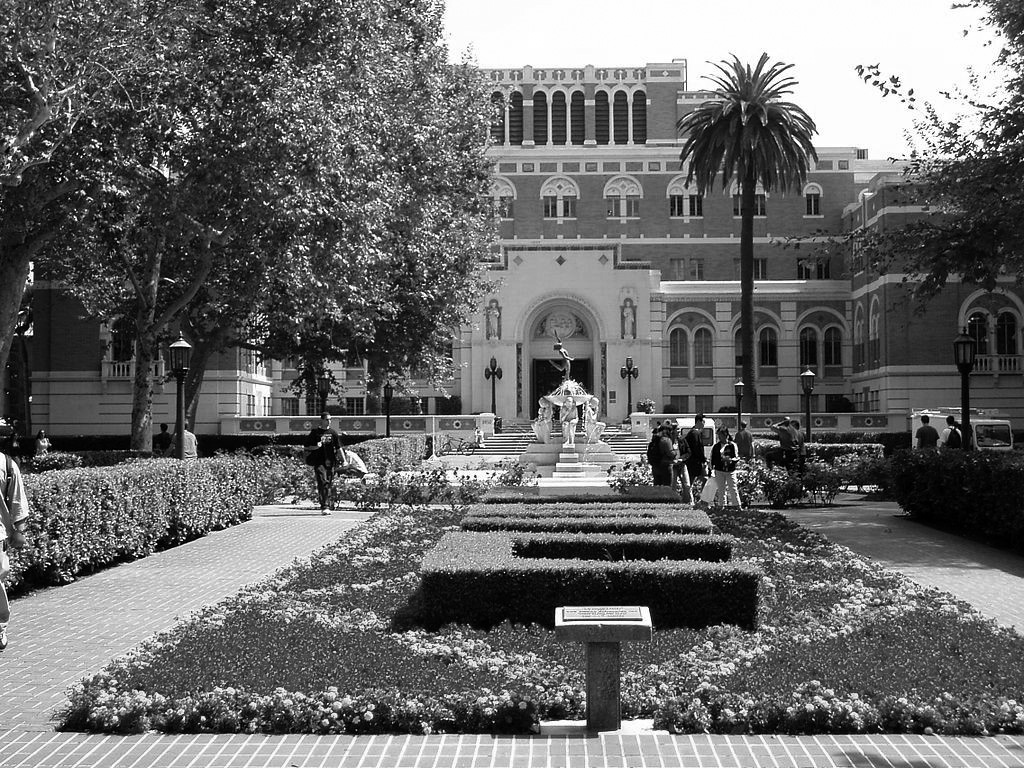 |
|
| (2007)*^ - Doheny Library and gardens with fountain — at the University of Southern California. 1932 library in the Romanesque Revival style, by Ralph Adams Cram. |
Historical Notes The exterior of the library is Romanesque Revival, influenced by the geometric lines and simplified ornament favored by the than-popular Moderne style. The interior is richly appointed with fine woods, tile, marble, and stained glass. In 1967, Lunden and Joseph L. Johnson designed a well-integrated addition to the rear of the library. More than 80 years after its construction, Doheny Library is still evolving. The building is an intellectual and cultural destination on campus, hosting exhibitions, lectures, conferences, performances, readings, and the annual USC Scripter Award ceremony.* |
* * * * * |
|
Other Sections of Interest |
|
Water and Power in Early LA |
|
Newest Additions |
New Search Index |

A new SEARCH INDEX has been added to help navigate through the thousands of topics and images found in our collection. Try it out for a test run.
Click HERE for Search Index |
* * * * * |
< Back
Menu
- Home
- Mission
- Museum
- Mulholland Service Award
- Major Efforts
- Board Officers and Directors
- Positions on Owens Valley and the City of Los Angeles Issues
- Legislative Positions on
Water Issues
- Legislative Positions on
Energy Issues
- Recent Newsletters
- Historical Op Ed Pieces
- Membership
- Contact Us
- Search Index
© Copyright Water and Power Associates
Layout by Rocket Website Templates